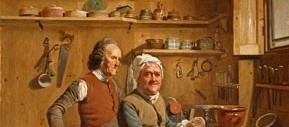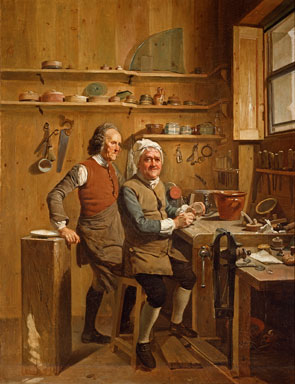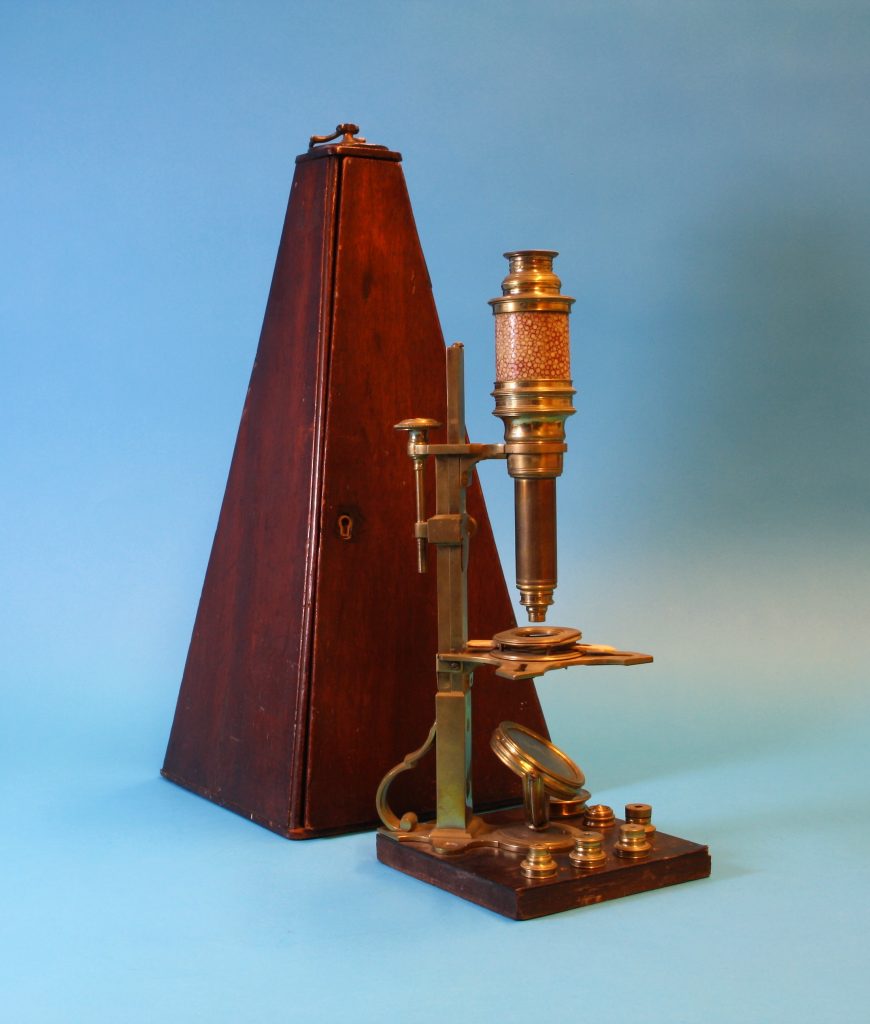
John Cuff (1708-1772)
 Despite being one of the best-remembered microscope makers of his time, John Cuff had a difficult beginning. His parents were Peter Cuff (1676-1722), a watchmaker and member of the Broderer’s Guild, and Rebecca Cricklow (c1675-c1722). At a time when religious conformity was essential, they were members of a dissenting group linked to the Huguenot refugees arriving from France. Their particular sect were known as the Philadelphians (which translates as brotherly love) and his mother, particularly, was notorious for her hysterical and violent performances at prayer meetings.
Despite being one of the best-remembered microscope makers of his time, John Cuff had a difficult beginning. His parents were Peter Cuff (1676-1722), a watchmaker and member of the Broderer’s Guild, and Rebecca Cricklow (c1675-c1722). At a time when religious conformity was essential, they were members of a dissenting group linked to the Huguenot refugees arriving from France. Their particular sect were known as the Philadelphians (which translates as brotherly love) and his mother, particularly, was notorious for her hysterical and violent performances at prayer meetings.
In 1722, John was apprenticed to James Mann, a member of the Spectacle Maker’s Company. By 1730, he had completed his apprenticeship and by 1737 he had set up his own business at the “Reflecting Microscope and Spectacles”. He later moved to other addresses in the centre of London. By 1743, he was advertising “wholesale and retail, all manner of curious optical instruments”.
Cuff was lucky in his contacts. After meeting Lieberkühn and then modifying the design of Lieberkühn’s microscopes, he was then asked by Abraham Trembley to design a microscope for observing aquatic life. After 2 years, Cuff produced his Aquatic Microscope. Henry Baker FRS, author of popular books on microscopy, was a close friend and he pointed out to Cuff the inconvenience of the currently-used method of focusing microscopes which involved moving the inner tube up and down. He also wanted a better method of viewing opaque samples. The result was the microscope for which John Cuff is remembered, known as the “Double Microscope”. Rather than the tripod-support of the previously-popular Culpeper style microscopes, Cuff’s microscope had a single supporting column and focus was adjusted up and down this column using screws. In addition to the usual mirror below the sample for bright field lighting, a lens was generally attached to the column to aid the lighting of opaque samples.
Despite this, Cuff seems to have been a poor businessman. Within a few years, his design was widely copied by rivals across Britain and Europe, and in 1758 he was driven out of business when another microscope maker, Benjamin Martin, opened his shop next door.

Compound non-achromatic microscope after Cuff
CUFF
ca. 1745